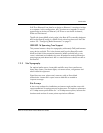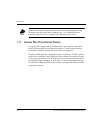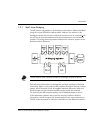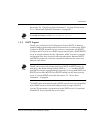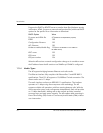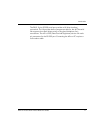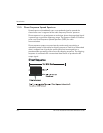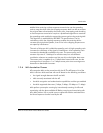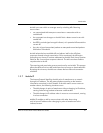
Introduction
AP-4131 Access Point Product Reference Guide 19
Mobile Units receiving a direct-sequence transmission use the spreading
code to map the chips within the chipping sequence back into bits to recreate
the original data transmitted by the access point. Intercepting and decoding
a direct-sequence transmission requires a predefined algorithm to associate
the spreading code used by the transmitting access point to the receiving MU.
This algorithm is established by IEEE 802.11b specifications. The bit
redundancy within the chipping sequence enables the receiving MU to
recreate the original data pattern, even if bits in the chipping sequence are
corrupted by interference.
The ratio of chips per bit is called the spreading ratio. A high spreading ratio
increases the resistance of the signal to interference. A low spreading ratio
increases the bandwidth available to the user. The access point uses a
constant chip rate of 11Mchips/s for all data rates, but uses different
modulation schemes to encode more bits per chip at the higher data rates.
The access point is capable of an 11 Mbps data transmission rate, but the
coverage area is less than a 1 or 2 Mbps access point since coverage area
decreases as bandwidth increases.
1.3.6 MU Association Process
APs recognize MUs as they associate with the AP. The AP keeps a list of the
MUs it services. MUs associate with an AP based on the following conditions:
• the signal strength between the AP and MU
• MUs currently associated with the AP
• the MUs encryption and authentication capabilities and the type enabled
• the MUs supported data rates (1 Mbps, 2 Mbps, 5.5 Mbps or 11 Mbps).
MUs perform preemptive roaming by intermittently scanning for APs and
associating with the best available AP. Before roaming and associating with
APs, MUs perform full or partial scans to collect AP statistics and determine
the direct-sequence channel used by the AP.



